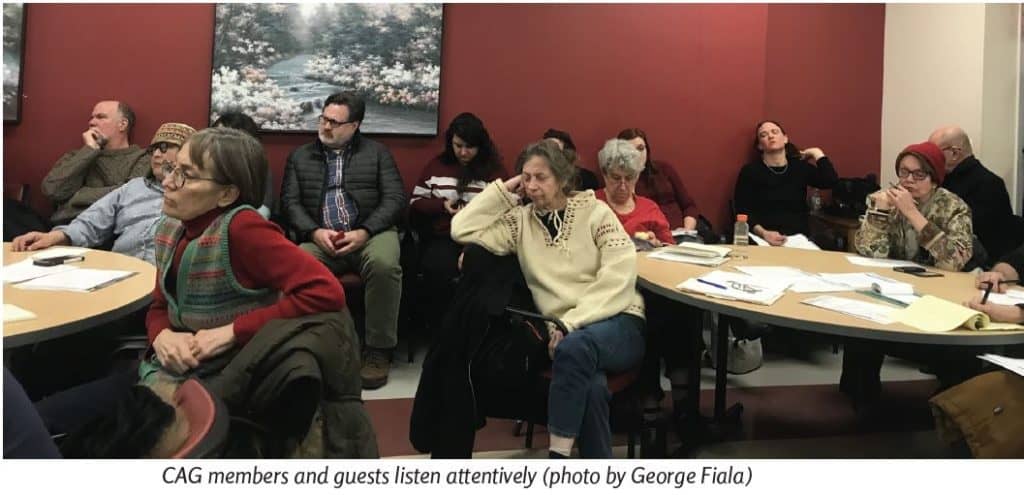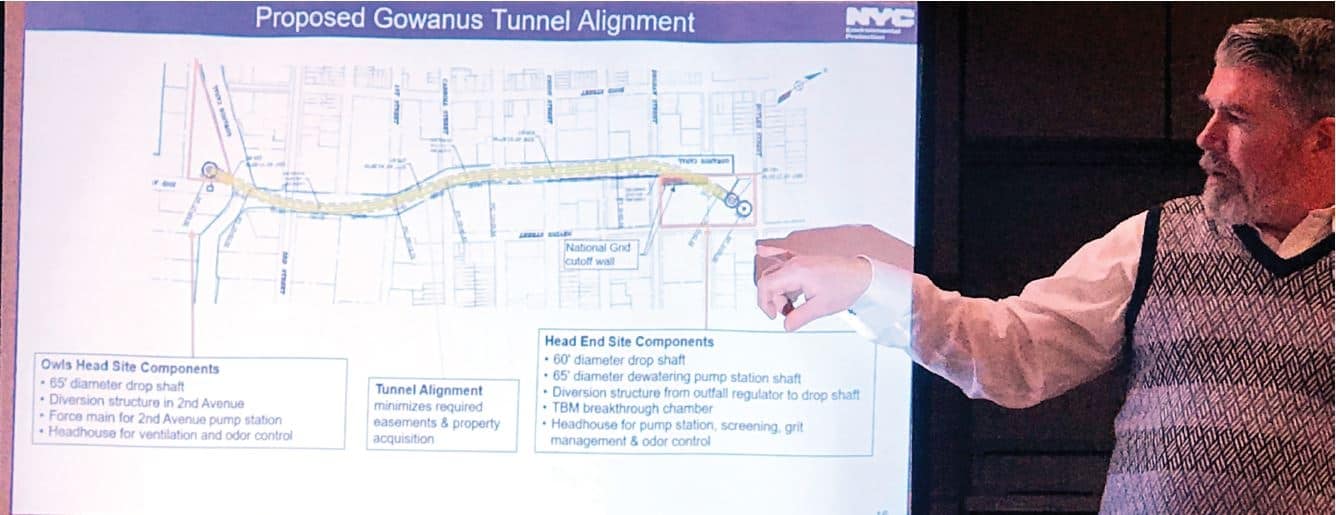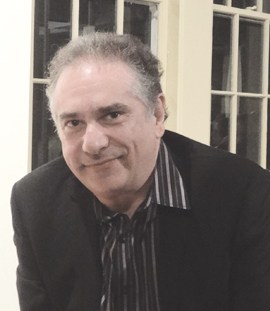The first Gowanus Canal Community Advisory Group (CAG) meeting for the new calendar year was held on Jan. 22 without Environmental Protection Agency (EPA)’s presence due to the partial federal government shut-down – the longest shutdown in U.S. history, which had reached Day 32 by the meeting’s date. CAG member Brad Vogel facilitated the night’s agenda that featured the NYC Department of Environmental Protection (DEP)’s latest idea for preventing raw sewage from being dumped into the canal, as ordered by the EPA. The Gowanus was named a Superfund site back in 2009.
At the last meeting, in November, DEP announced that they would like the EPA to consider having a storage tunnel built, instead of two storage tanks, as had been ordered originally.
The CAG, composed mostly of representatives from local community groups, including the Gowanus Alliance, FROGG and Community Board 6, has maintained many of the same representatives for the past 8 years. They have all been through the melodrama of NYC’s seeming recalcitrance at spending money to take care of the sewer shortcomings. In retrospect, that might have been partly caused by the somewhat arrogant attitude and tactics of the previous DEP commissioner, Emily Lloyd, and her second-in-command Eric Landau, since moved on to the fitting position of the also somewhat contentious Brooklyn Bridge Park Corporation.
The new DEP representative to the CAG is the sincere and affable Project Coordinator Kevin Clarke. He has been much more successful at projecting a friendlier DEP presence in front of the somewhat suspicious CAG.
Clarke’s January presentation was about their tunnel proposal. He explained that the soft-ground tunnel would be 125-150 feet underground and run a half-mile-long underneath the canal. Possible diameter sizes and combined sewage overflow (CSO) retention rates weren’t explicitly mentioned. He also said the storage volume would be 4 million gallons more than the combined storage volume of the two proposed tanks – 16 million gallons instead of 12. The tunnel approach would cost about $50 million more than what the tank project is estimated to be (which is roughly $1.2 billion), primarily due to construction expenses. Additionally, Clarke said about $30 million has already been spent on design work for the tanks.
He also mentioned the two other New York CSO projects DEP’s involved with: Flushing Bay and Newtown Creek. The Newtown Creek project, for example, has a proposed 2.5-mile long rock tunnel alternative – with a diameter of 19-30 feet – to capture 39 million gallons of sewage runoff. DEP’s “Newtown Creek CSO Long-term Control Plan” presentation, given to the Newtown Creek CAG in July 2017, stated a tunnel with that diameter would cost $730 million.
Clarke explained to the Gowanus CAG that soft-ground and rock tunnels (of different lengths and diameters) are being built not just here in the U.S., but around the world as well. He then showed slides and data related to the DC Water’s Clean Rivers Project and the Thames Tideway Tunnel in London – two projects that DEP’s been closely looking at, while working on these tunnel alternative proposals, because they have “very similar conditions [to the Gowanus Canal].”
“I wanted to throw those up there to share with you that New York City can benefit from literally decades of national and international soft-ground tunnel programs, including lessons learned and significant advances in soft-ground tunnel technology,” Clarke said. “If anything we’re probably a little bit behind from some other municipalities … but that’s almost a good thing because we get to learn a lot from those programs.”
AECOM
A representative from AECOM was in the packed audience. AECOM, a multinational engineering firm that provides design, consulting, construction, and management services to a wide range of clients, has worked with DEP since the 1990s. Their first project was leading a Citywide research program for nitrogen removal from treated waste water in the late ’90s. They are also the City’s CSO Long Term Control Plan prime consultants.
AECOM is currently involved with the Flushing Bay and Newtown Creek project proposals and were the main engineering and design consultants for the new Second Avenue Subway that opened in Jan. 2017.
Red Hookers will remember that is AECOM’s Chris Ward who is leading a fight to rezone all of Red Hook’s waterfront to allow the construction of large, luxury, residential skyscrapers, to be served by an extension of the subway system through the neighborhood.

Tunnels are an AECOM specialty, whether they be for travel or sewage, and it makes sense that they would be a behind-the-scenes promoter of tunnels instead of containers.
POSSIBLE FUTURE TUNNEL EXTENSION
Clarke noted that, should the tunnel be pursued, it could be extended in the future, potentially down 2nd Avenue or further along the alignment of the Gowanus Canal. This was presented as the overriding benefit of tunnel vs. tank.
Other stated advantages were that more wastes would be captured; improved neighborhood resiliency; reduction of street flooding; and accommodate of future development and population (Gowanus is about to be rezoned, greatly increasing population density).
Other benefits of tunnel are said to be: increased storage capacity, less disruption to the neighborhood during construction, reduced annual CSO discharge events, and more design flexibility for the public open space next to the head house.
Complete construction for either proposed project would be complete by 2030 – the tanks expected to be done by July 2030 and the tunnel done by Dec. 2030.
Since EPA Project Manager Christos Tsiamis and Facilitator Doug Sarno were not there, leaving DEP’s contentions virtually unchallenged as regards cost or science. Questions from the audience were plentiful but mostly benign.
EPA will be the decider of whether the tunnel alternative can be pursued. DEP has already spent over $30 million on the container design, as stated by Clarke.
The next CAG meeting is Tuesday, Feb. 26, at 6:30 pm at Mary Star of the Sea (41 1st Street). CAG meetings are open to the public – one need not be a member to attend.
Top photo of Clarke presenting by DeGregorio
Author
-

George Fiala has worked in radio, newspapers and direct marketing his whole life, except for when he was a vendor at Shea Stadium, pizza and cheesesteak maker in Lancaster, PA, and an occasional comic book dealer. He studied English and drinking in college, international relations at the New School, and in his spare time plays drums and fixes pinball machines.
View all posts
George Fiala has worked in radio, newspapers and direct marketing his whole life, except for when he was a vendor at Shea Stadium, pizza and cheesesteak maker in Lancaster, PA, and an occasional comic book dealer. He studied English and drinking in college, international relations at the New School, and in his spare time plays drums and fixes pinball machines.










